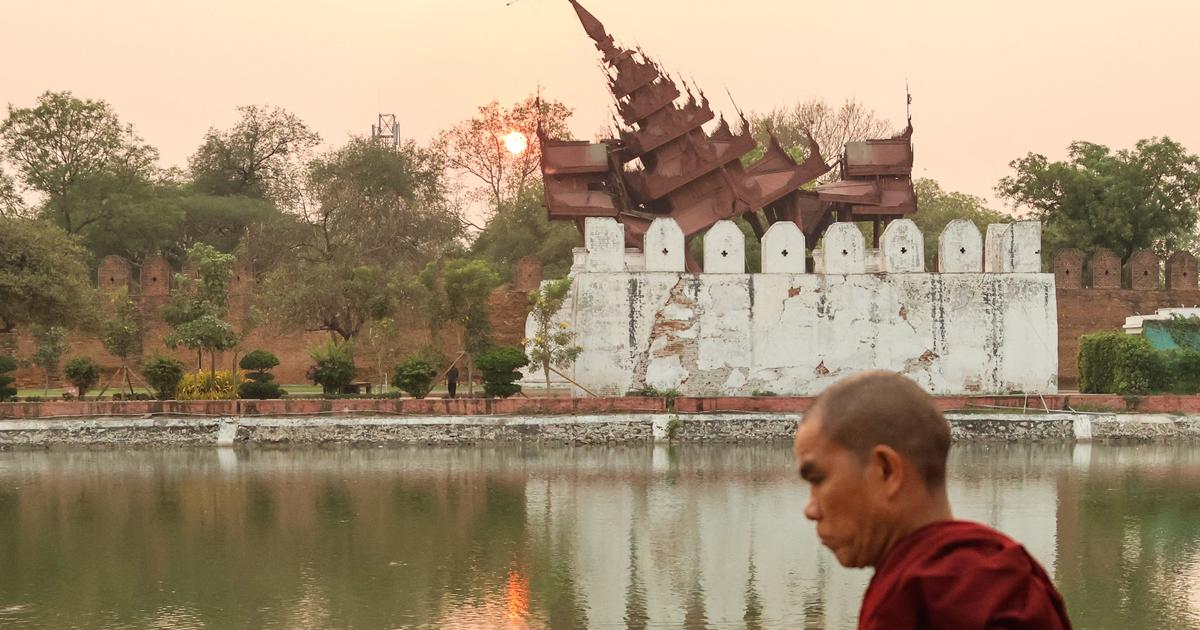The earthquake of March 28 has not only struck the populations. In the Mandalay region, the royal palace and prestigious monasteries were seriously damaged.
The earth trembled, and with it, centuries of history collapsed. On March 28, 2025, an earthquake of magnitude 7.7 struck the center of Burma, causing the death of at least 2,700 people and thousands of injured, according to the latest assessment. Beyond tragic human losses, this disaster has imposed considerable damage to the country’s cultural heritage, notably in Mandalay, the last royal capital of Burma.
The second largest city in the country, with 1.5 million inhabitants, paid a heavy price for this disaster. The Royal Palace has lost one of its watchtowers and part of its enclosure. He was one of the last vestiges of the Konbaung dynasty. South-east of Mandalay, the 76-meter golden lick from the Shwe Sar Yan pagoda, dating from the 18th centurye century was reduced to dust under the eyes of witnesses.
A spiritual heritage in danger
Considered the cultural center of Burma, the Mandalay region welcomes many historic sites, such as in Bagan. With nearly 2,200 Buddhist temples and pagodas, witnesses of a spiritual past, the plain classified as a UNESCO World Heritage is considered to be the second largest archaeological ensemble in Asia after Angkor. This setting has long been a strong point of tourism in Burma. While some press articles report that Bagan temples would have been damaged, no authenticated image for the moment has confirmed these claims.
Sai Aung Main / AFP
The white pagoda Hsinbyume, dating from 1816, as well as the Maha Sandamuni pagoda in Mandalay, also suffered damage, its golden arrow having collapsed. In Pindaya, several stupas collapsed, taking away centuries of devotion and craft know-how with them. Photographs captured by the Associated Press, one of the few international media to still have journalists in Myanmar, show damaged pagodas in the country’s capital, Nay Pyi Taw.
According to the newspaper The Irrawaddythe earthquake has also destroyed sixty mosques in the regions of Mandalay and Sagaing, killing nearly 700 faithful present to pray. According to the information site, the state of certain mosques was alarming before the disaster, explaining that successive governments did not care, to avoid being labeled as pro-Muslims.
The World Monuments Fund (WMF) published a statement on Friday March 28, explaining that its teams were mobilized to collect information on the extent of the damage in Burma and neighboring Thailand, which also felt the impact of earthquakes. For its part, the military regime in power claims to do its best by requesting international aid to respond to the disaster, but a lot of information reported in recent days of air strikes carried out by the army against armed groups opposed to its regime, even though the population is still looking for bodies under the rubble.
